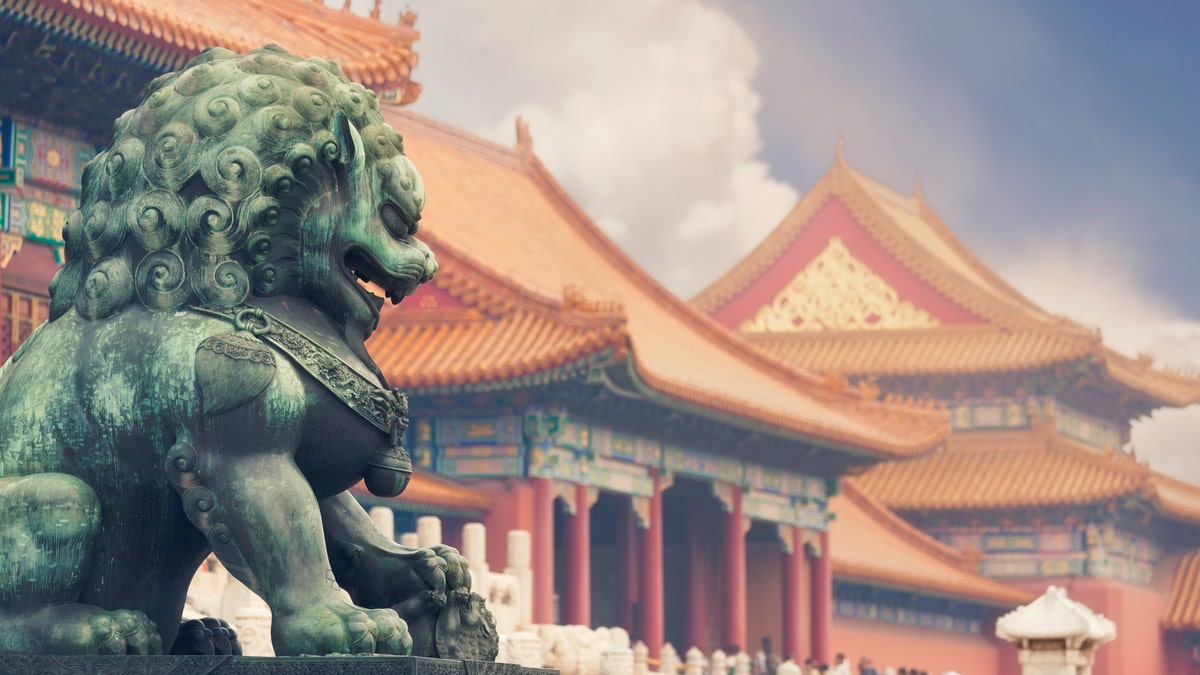
An old imperial lion sculpture in seen in front of historical Forbidden City buildings. (iStock)
A historic portion of Beijing’s famed Forbidden City will soon open to the public for the first time.
The World Monuments Fund (WMF) has announced that the sprawling Qianlong Garden, said to hold “some of the most significant, exquisitely designed interiors to survive relatively unchanged from imperial China,” will soon open for visitors for the very first time since its centuries-old origins.
The Qianlong Garden was created for the anticipated retirement of the Qianlong Emperor, China’s longest-reigning sovereign, between 1771 and 1776 and was meant to serve as a grand complex for his retirement in the Forbidden City. According to WMF officials, it was meant to be a mini-Forbidden City housed within the Forbidden City.
The complex, which takes up close to two acres of the northeast quadrant of the Forbidden City, has four courtyards, 27 different pavilions and structures, and eye-catching rock gardens. Inside, visitors will find decorations and furnishings dating back to a “time widely considered to be one of the boldest and most extravagant periods of interior design in China’s history,” according to WMF representatives.
Read more from Travel + Leisure:
- Southwest Has $44 U.S. Flights Right Now — but You'll Have to Act Fast
- The Temperature Is so Low in Chicago the City Is Experiencing ‘Frost Quakes'
- This Packable Robot Will Scan Your Hotel Bed and Rid It of Germs
- A Farmer in Hawaii Is Growing Record-sized Avocados That Weigh As Much As a Newborn Baby
- Why the Northern and Southern Lights Look Different
Though the complex, which is the only private imperial garden to have been built for an emperor's retirement, was created with the most pristine craftsmanship and luxury goods, it remained mostly unused after 1924, signaling the need for repairs to maintain its prestige.
For this reason, the WMF teamed up with China's Palace Museum, studying the sight and creating a restoration plan to bring its magnificent interiors to an audience.
Conservation of locations like the Juanqinzhai theater room have already been completed. Juanqinzhai, also known as the Studio of Exhaustion from Diligent Service, is known for its silk paintings across its ceiling and walls of the private theater, its bamboo threaded reception room, and its jade inlays and textiles.
Take a look at the video below to get a sense of Juanqinzhai's fascinating design.
Now, the WMF has chosen architect Annabelle Selldorf of the NYC-based firm Selldorf Architects to design an interpretation center at the Qianlong Garden, giving the public access to the sight.
The interpretation center, which will be housed in a restored structure within the second courtyard of the Qianlong Garden, will be dispersed between three halls surrounding an open pavilion to give visitors a look into the past and current state of the sight.
There will be one hall with exhibition space to showcase the complex’s eighteenth-century design and history, another hall showcasing the conservation of the complex, and an open space where visitors will have clear views of the rock gardens.
Each hall in the new center will be aligned with elements that include artifacts and videos to provide visitors with a memorable experience, with construction on the interior of the interpretation center set to start later this year for completion in 2020.




















